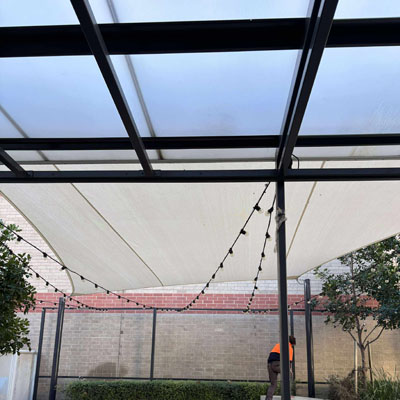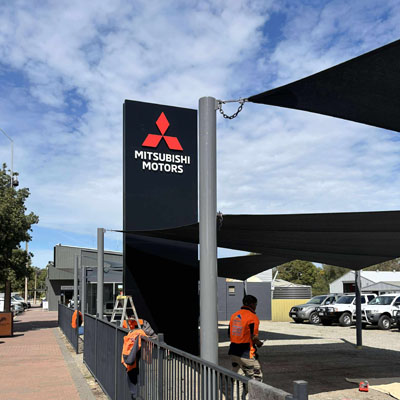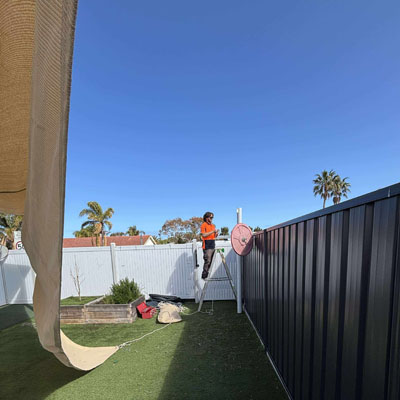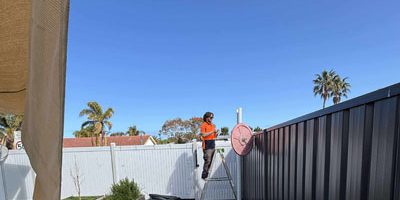Becoming a Shade Sail Installer in Sydney / NSW
Installing shade sails in Sydney and across NSW comes with specific requirements around approvals, building codes, and technical standards. While many small residential sails are considered exempt development, larger or commercial projects often require council approval and strict compliance with the National Construction Code (NCC) and Australian Standards.
By understanding both the planning and building requirements, installers can ensure projects are legally compliant, structurally safe, and long-lasting.
Local Council Approvals
In NSW, certain shade structures are classed as Exempt Development under the State Environmental Planning Policy (Exempt and Complying Development Codes) 2008. This means they can be built without formal council approval if they meet set conditions. These rules are designed to keep smaller structures straightforward while ensuring larger or higher-risk projects are properly regulated.
For larger residential projects or any commercial installation, approvals may be required. Each local council has specific development controls and may impose conditions based on zoning, location, or overlays such as heritage or bushfire risk.
Key requirements for council approval in NSW:
- Shade sails are exempt if no higher than 3 metres above ground.
- They must be set back at least 900 mm from side and rear boundaries (or 5 metres in rural/residential R5 and RU zones).
- Structures must be located behind the building line of a road frontage.
- Exempt rules do not apply in heritage, conservation, flood, or foreshore areas.
- Larger or non-exempt structures may need a Development Application (DA) or Complying Development Certificate (CDC).

In practice, installers should always check the NSW Planning Portal and local council development control plans before starting. This ensures the project won’t face delays or costly compliance issues later.
Building Codes and Technical Standards
Even when development approval isn’t needed, all shade structures must comply with the Building Code of Australia (BCA) and relevant Australian Standards. These codes ensure structures are designed and built to handle wind, weather, and safety demands. For installers, compliance with these codes is non-negotiable.
Structural components such as posts, anchors, fixings, and fabric all need to meet load-bearing and durability requirements. Larger installations often require sign-off by a licensed structural engineer to satisfy council or certifier demands.
Key standards and technical requirements include:
- AS/NZS 1170 (Structural Design Actions – Wind Loads) to calculate wind pressures.
- Safe foundation depth and footing design to resist uplift and movement.
- Anchors, shackles, turnbuckles, and cables rated for required tensile loads.
- UV-resistant and fire-retardant shade fabric where applicable.
- Ongoing safety and maintenance obligations to ensure long-term compliance.
By following these standards, installers create safe, durable shade sails that withstand harsh weather and meet legal requirements. This not only protects clients but also builds the installer’s professional reputation.

What an Installer Needs to Do in Practice
Every custom sail we produce is designed with your space in mind. We assess how the sun moves across your property, how water drains, and how to maximise airflow without sacrificing coverage.
For every project, installers must determine whether the shade sail qualifies as exempt development or requires a formal approval process. This step is essential to avoid breaching council regulations. Once the legal pathway is clear, installers must also ensure the structure meets building code requirements and that any necessary engineering certification is obtained.
In addition to planning checks, installers should keep records of all drawings, engineering certifications, and council correspondence. This documentation provides proof of compliance if disputes or inspections occur in the future.
Practical steps for installers include:
- Check the Exempt Development Code on the NSW Planning Portal.
- Review the relevant local council fact sheets or development control plans.
- Confirm maximum height, setbacks, and road frontage requirements.
- Prepare engineering drawings and footing designs for non-exempt projects.
- Budget for council fees, approval timelines, and required inspections.
By consistently following this process, installers can approach each job with confidence, knowing it meets both planning and building obligations. This protects their business, reassures clients, and ensures shade sails are legally and structurally sound.

Start Your Journey as a Shade Sail Installer
Becoming a shade sail installer in Sydney and across NSW means more than learning how to tension fabric. It requires an understanding of council approvals, building codes, and structural standards to deliver safe and compliant projects every time. Installers who take these requirements seriously stand out in the industry and earn long-term trust from their clients.
If you’re ready to grow your business and connect with customers looking for professional shade sail installation, our installer portal makes it simple. You’ll gain access to project opportunities, industry resources, and direct customer leads.
Sign up today through our Installer Portal and take the next step towards becoming a trusted shade sail installer in NSW.
FAQ: Become a Shade Sail Installer
Do I need council approval to install a shade sail in Sydney?
In many cases, small residential shade sails are exempt development under NSW planning laws, meaning no approval is required if conditions are met. Larger or commercial projects often require a Development Application (DA) or Complying Development Certificate (CDC).
What is the maximum size or height of a shade sail without council approval in NSW?
Shade sails are generally exempt if they are no higher than 3 metres, set back at least 900 mm from boundaries (or 5 metres in rural/residential zones), and placed behind the building line of the road frontage.
Do shade sails have to meet building codes in NSW?
Yes. Even exempt projects must comply with the Building Code of Australia (BCA) and relevant Australian Standards, including structural requirements for posts, anchors, cables, and fabric.
When do I need an engineer for a shade sail project?
If the project is large, commercial, or requires council approval, engineering drawings and certification are often mandatory to prove the structure meets wind load and structural safety requirements.
Can anyone become a shade sail installer in NSW?
While there isn’t a specific “shade sail licence” installers may need a builder’s licence for structural works and must comply with workplace safety laws. Professional knowledge of planning codes and technical standards is essential to operate legally and successfully.








